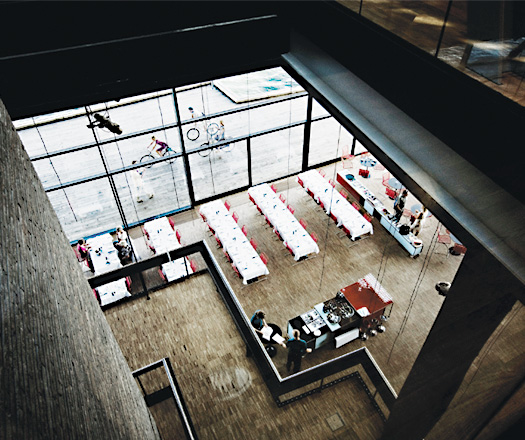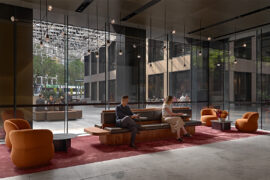In Australia last week, Danish Designer Joakim Lassen met with indesignlive to discuss his design philosophy, the Royal Danish Theatre and the iconic Tivoli chair.
January 21st, 2009
Danish designer Joakim Lassen grew up surrounded by design, with it running through his veins. The great-great-grandson of Fritz Hansen, Lassen represents his family’s fifth generation of furniture designers.
Despite this design lineage, and his almost innate appreciation for great design, Lassen took a decidedly different career path – studying Cultural Geography at university – and it was many years before he returned to the family profession. “In the start I tried to keep away, but in the end I found that design could be very interesting,” he says.
Lassen established his company DJOB in 1998 and works closely with his father, Peter Lassen, who runs the shelving company, Montana. While DJOB mainly produce work desks and height adjustable tables, the company also began producing Verner Panton’s 1955 ‘Tivoli’ chair a few years ago.
“In the beginning [Panton] made the ‘Tivoli’ by himself, and then after a while my father and grandfather started making them. But there were certain things that couldn’t be solved properly at that time because of material, so they stopped making it in that style in the 70s.”
Lassen remembers the chair fondly from his childhood and – following a chance meeting with the ‘Tivoli’ at a Verner Panton exhibition at the Danish Design Centre in 2004 – the design was reborn. “When I saw it in that exhibition, I just said ‘Yes, that’s the one we’re going to make’,” he says.
As close family friends, Panton’s wife and daughter gave permission for Lassen to produce the chair once more. DJOB redeveloped the chair with new materials and developed further Panton’s ideas for bar stool and lounge chair versions.
The ‘Tivoli’, along with a Verner Panton table, was used by the Lassen’s in the fit-out of the new Royal Danish Playhouse in Copenhagen. Joakim and his father were asked to supply furniture and shelving for the office spaces as well as for the public areas and conference spaces.
“I love the way they have used our furniture in some areas, but in other areas… a lot of their loose furniture that isn’t ours has come from storage from old plays. It creates a very good combination with this cool modern house.”
Lassen helped to produce a book (in Danish) of images and captions celebrating the new playhouse, which will be released in February 2009.
“I have found a value in what I am doing. I don’t do it for money, I do it because there is a reason for making good quality, good design.”



INDESIGN is on instagram
Follow @indesignlive
A searchable and comprehensive guide for specifying leading products and their suppliers
Keep up to date with the latest and greatest from our industry BFF's!

Schneider Electric’s new range are making bulky outlets a thing of the past with the new UNICA X collection.

How can design empower the individual in a workplace transforming from a place to an activity? Here, Design Director Joel Sampson reveals how prioritising human needs – including agency, privacy, pause and connection – and leveraging responsive spatial solutions like the Herman Miller Bay Work Pod is key to crafting engaging and radically inclusive hybrid environments.

Gaggenau’s understated appliance fuses a carefully calibrated aesthetic of deliberate subtraction with an intuitive dynamism of culinary fluidity, unveiling a delightfully unrestricted spectrum of high-performing creativity.

Defined by refinement: DKO has completed the new Marriott Hotel at Docklands, Melbourne. Residential in feel, DKO says it will stand the test of time and delight the discerning traveller.

Sub-Zero, the leader in luxury refrigeration and wine storage, continues to set the standard with two new integrated models.
The internet never sleeps! Here's the stuff you might have missed

Grimshaw has completed a revitalisation of Collins Place, adding new layers to an already historically and architecturally rich site in Melbourne’s CBD.

The Melbourne-based artist works at the intersection of art and architecture. In a new exhibition at MAGMA Galleries, he turns his focus on urban space and agency to a smaller scale.